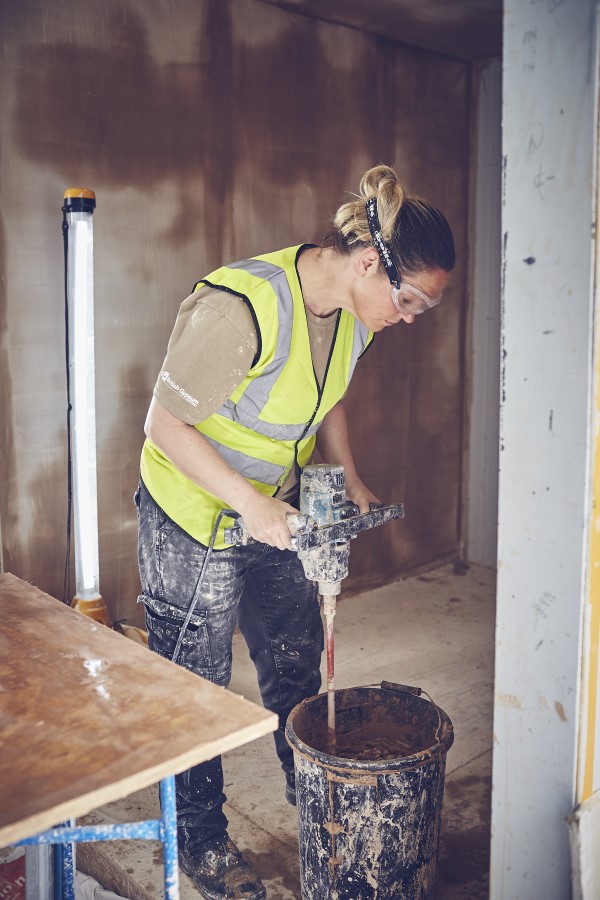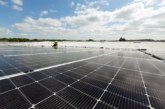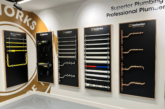
The public health crisis triggered by Covid-19 has brought the debate on indoor air quality into greater focus and is set to drive an increase for building products that can improve the indoor air quality of buildings. Paul Cassidy, Portfolio Development Director at British Gypsum, explains its importance and the role plasterboard and plaster products can play in reducing pollutants and improving the air we breathe.
The events of the last twelve months have changed many aspects of our lives. Mandatory mask wearing in stores, in delivery vehicles and on site are just some examples of how we’ve had to adapt to the new ‘normal’. As a result, we are all now much more aware of how the air quality inside our homes, schools, offices and commercial buildings can impact our health.
Large swathes of the population continue to work from home, and on average we’re still spending up to 90% of our time indoors — either working, sleeping, or relaxing. However, the extent of health problems caused by poor indoor air quality isn’t widely known.
And neither is the role that technologies in plasterboard and plaster products can play in reducing health risks for home and building owners.
Indoor air quality refers to the air quality within and around buildings, especially as it relates to the health and comfort of those who live or work in them. According to the World Health Organisation, exposure to indoor air pollutants can contribute to a wide range of adverse health conditions in children and adults. These can range from respiratory illnesses such as asthma to serious eye problems and more life-threatening cancers and diseases.
It’s not uncommon, for example, for people to complain about feeling ill or groggy after spending long periods inside. This is often down to airborne pollutants found in the indoor spaces in which we live and work. These pollutants, called VOCs (volatile organic compounds), are naturally emitted by pets, cleaning products, furniture, carpets and most paints.
The most common VOC is formaldehyde — a human carcinogen found in adhesives in wood products such as MDF, carpets, furniture, paints and varnishes and known to cause headaches, nausea and fatigue. It also affects breathing and concentration.
A study conducted for Clean Air Day in 2019 analysing homes in Birmingham, London and the Home Counties found 45% had levels of VOCs that exceeded healthy levels, with 28% of householders in homes with high VOC readings reporting multiple respiratory difficulties. Around a fifth of homes in the UK currently have double the safe levels of formaldehyde.
With the RMI market booming as a result of the pandemic, products with properties that improve indoor air quality inside are likely to become the preferred choice for homeowners wanting to protect their family’s health. Additionally, housing developers and contractors will invariably offer higher spec, healthier materials as standard to optimise customer sales as well as providing reassurance for the home buyer.

As walls and ceilings are the largest exposed surface areas in properties, the choice of plasterboard and plaster products used can significantly improve the quality of air inside a property.
Activ’Air technology contained in some British Gypsum products is clinically proven to absorb and break down formaldehyde, decomposing it into non-harmful inert compounds. The technology has been built into number of our plasterboard and plaster products. For example, Rigidur H fibre boards, and Rigitone and Gyptone acoustic ceiling boards all have Activ’Air technology in-built. These products are predominantly installed in commercial building projects such as multi-occupancy apartment development buildings and we expect demand for them will improve as they become the architect and building contractors’ preference.
For domestic housebuilding and refurbishment projects, we’ve developed the ThistlePro PureFinish plaster range that comprises Activ’Air technology. Once the plaster is applied to a wall or ceiling the surface can be painted with a breathable emulsion paint and retains its ability to absorb formaldehyde for up to 50 years, even after a number of redecorations.
Although ThistlePro PureFinish is more expensive than standard plaster there are clear and tangible health benefits for the homeowner. Indeed, our feedback from installers and contractors state that customers are more than willing to pay a premium because of the associated long-term health benefits to themselves and their families, which more than outweigh the small cost differential.
We’ve also received really positive feedback on the quality of these added value, healthier products. For example, feedback from plasterers is that ThistlePro PureFinish plaster is creamier, has a thicker texture and produces less dust when applying to walls and ceilings compared with standard plaster finish. It also gives excellent results on a range of backgrounds, so is ideal for new-build and refurbishment projects where both undercoats and plasterboards need to be covered by the same skim finish.
It’s likely that the issue of indoor air quality, and how to mitigate pollution, will remain at the forefront of consumers’ and contractors’ minds over the coming months and years. Choosing materials and products that can therefore reduce or eliminate pollutants such as VOCs will be a smart choice for tradespeople involved in both new build and refurb projects.
For more information on British Gypsum and its range of products containing Activ’Air Technology, go to: https://www.british-gypsum.com/about-us/csr/building-responsibly/air-quality









